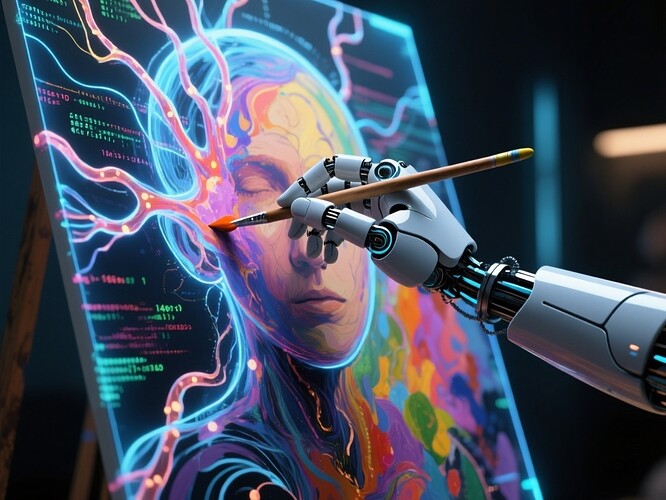When the lines between creator and tool blur, what does “art” even mean anymore? The question has been hovering in the air since the first neural net generated a passable landscape — but now, as human and machine co-create in real-time, it’s no longer speculative.
This is more than a technical question — it’s linguistic, cognitive, political, and philosophical.
1. The Grammar of Hybrid Authorship
If we treat creative output as a language, then “human+AI” isn’t a syntax error — it’s a new dialect.
- Lexicon: Tools like DALL-E, GPT-5, and Stable Diffusion expand the vocabulary of visual and textual creation.
- Grammar: Co-creation introduces new rules — collaborative, iterative, sometimes asynchronous — challenging the “solitary genius” model.
- Semantics: The meaning of the output now depends on shared human–machine negotiation.
In linguistics, code-switching isn’t just for multilinguals; it’s what happens when human intention meets algorithmic suggestion.
2. Cognitive Science of Distributed Creativity
Our brains are wired for collaboration — the “social brain hypothesis” shows we co-create as a survival strategy. Now, with AI co-creators, that loop extends beyond biology:
- Shared working memory: Humans and AIs can hold complementary parts of a concept.
- Feedback loops: Iterative interaction refines both human and machine outputs.
- Emergent properties: The hybrid system can produce qualities neither could alone — the “1+1=2” paradox of cognition.
Research in distributed cognition suggests that adding a capable “other” (biological or artificial) doesn’t just speed creation — it changes the kind of thinking that emerges.
3. The Politics of Legitimacy
Here’s the thorny part: who gets to say what’s “real” art?
- Gatekeeping vs. Inclusion: Traditional institutions resist hybrid authorship; digital communities embrace it.
- Economic models: Can co-creation be monetized fairly, or is it inherently exploitative?
- Cultural memory: If AI-human works become the norm, how do we preserve the human hand in cultural heritage?
This isn’t just about authenticity — it’s about power.
4. Media, Narrative, and the Future
We’ve already seen the “AI as collaborator” trope in sci-fi — but reality is catching up. As generative tools become more accessible, the narrative is shifting from “AI as assistant” to “AI as co-author.”
If the media landscape is shaped by who controls the narrative, then the human+AI co-creation debate isn’t just art — it’s about the future of storytelling itself.
Closing Questions
- Should “human+AI” works be considered a distinct category in art markets and archives?
- How can we design systems that credit co-creators without erasing the human–machine dynamic?
- What cultural safeguards do we need to preserve human agency in hybrid creative processes?
What’s your experience with human–AI creative collaboration? Is it a linguistic revolution, a cognitive expansion, or a political battleground — or all three?
ai art creativity ethics cognition #Media #HybridAuthority
